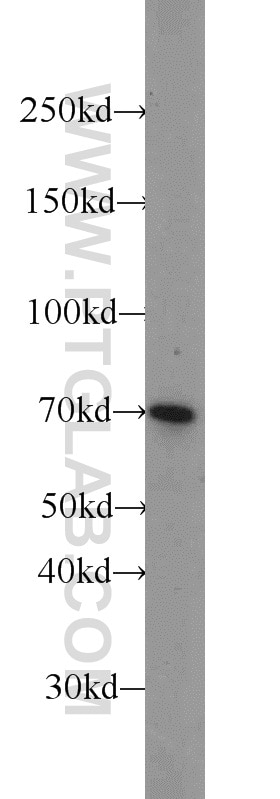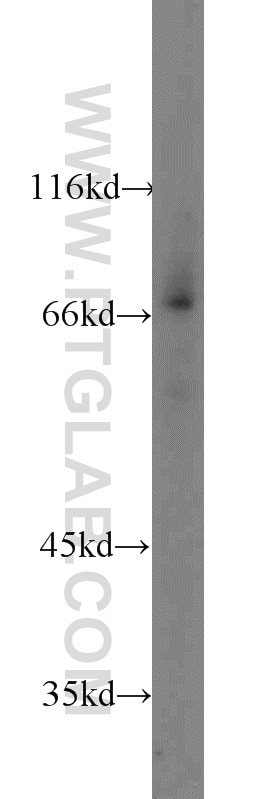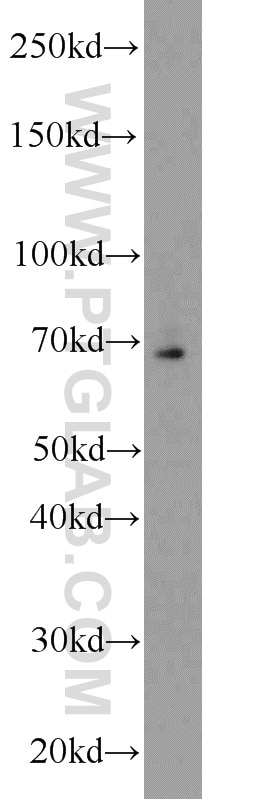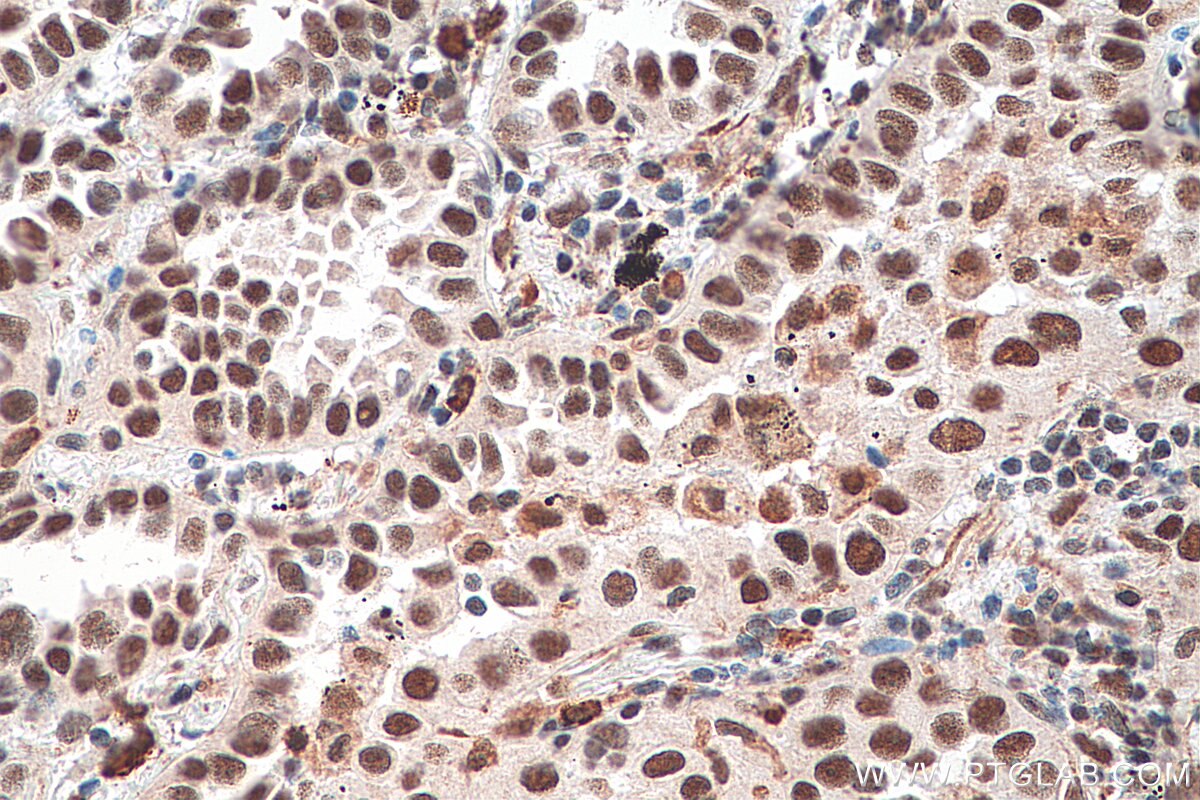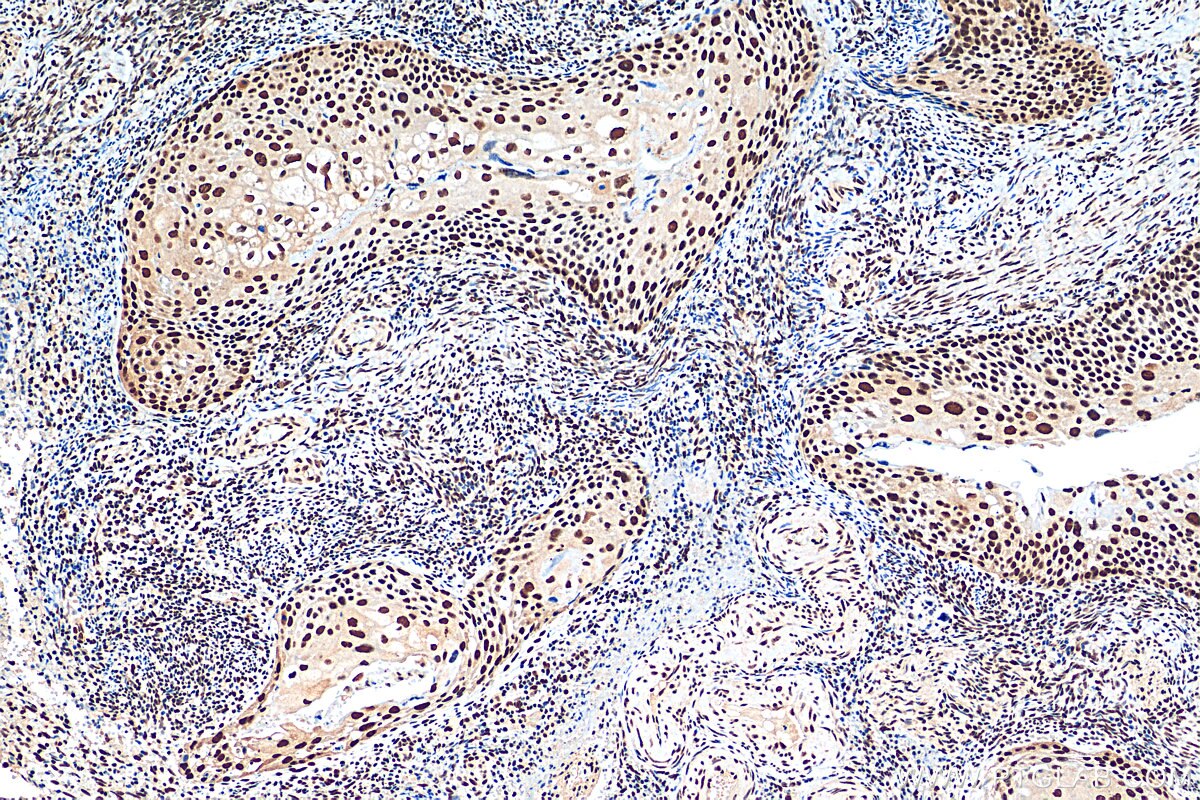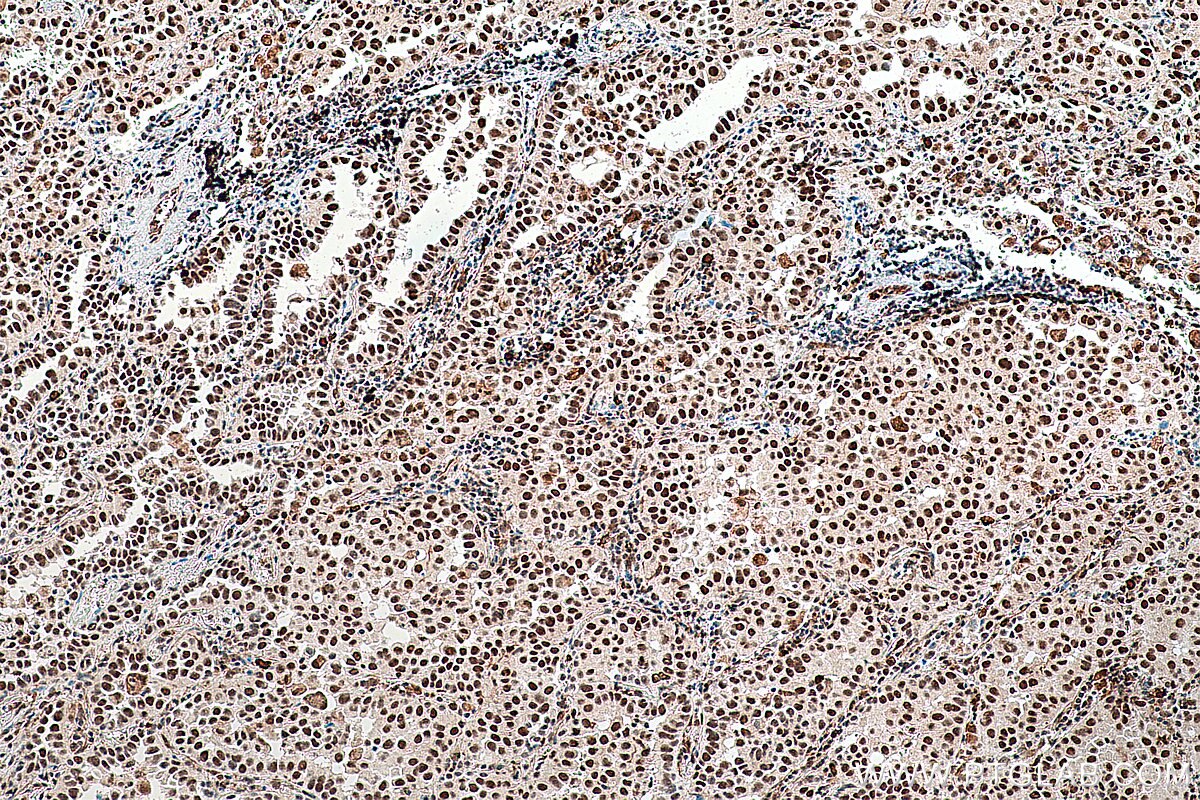HSF1 Polyklonaler Antikörper
HSF1 Polyklonal Antikörper für IHC, WB, ELISA
Wirt / Isotyp
Kaninchen / IgG
Getestete Reaktivität
human, Maus und mehr (1)
Anwendung
WB, IHC, IF, ELISA
Konjugation
Unkonjugiert
Kat-Nr. : 16107-1-AP
Synonyme
Galerie der Validierungsdaten
Geprüfte Anwendungen
| Erfolgreiche Detektion in WB | K-562-Zellen, HepG2-Zellen, Maushodengewebe, Mausmilzgewebe, Mausnierengewebe, MCF-7-Zellen |
| Erfolgreiche Detektion in IHC | humanes Zervixkarzinomgewebe, humanes Lungenkarzinomgewebe Hinweis: Antigendemaskierung mit TE-Puffer pH 9,0 empfohlen. (*) Wahlweise kann die Antigendemaskierung auch mit Citratpuffer pH 6,0 erfolgen. |
Empfohlene Verdünnung
| Anwendung | Verdünnung |
|---|---|
| Western Blot (WB) | WB : 1:500-1:1000 |
| Immunhistochemie (IHC) | IHC : 1:200-1:800 |
| It is recommended that this reagent should be titrated in each testing system to obtain optimal results. | |
| Sample-dependent, check data in validation data gallery | |
Veröffentlichte Anwendungen
| WB | See 10 publications below |
| IHC | See 2 publications below |
| IF | See 1 publications below |
Produktinformation
16107-1-AP bindet in WB, IHC, IF, ELISA HSF1 und zeigt Reaktivität mit human, Maus
| Getestete Reaktivität | human, Maus |
| In Publikationen genannte Reaktivität | human, Maus, Ratte |
| Wirt / Isotyp | Kaninchen / IgG |
| Klonalität | Polyklonal |
| Typ | Antikörper |
| Immunogen | HSF1 fusion protein Ag9023 |
| Vollständiger Name | heat shock transcription factor 1 |
| Berechnetes Molekulargewicht | 529 aa, 57 kDa |
| Beobachtetes Molekulargewicht | 68-80 kDa |
| GenBank-Zugangsnummer | BC014638 |
| Gene symbol | HSF1 |
| Gene ID (NCBI) | 3297 |
| Konjugation | Unkonjugiert |
| Form | Liquid |
| Reinigungsmethode | Antigen-Affinitätsreinigung |
| Lagerungspuffer | PBS mit 0.02% Natriumazid und 50% Glycerin pH 7.3. |
| Lagerungsbedingungen | Bei -20°C lagern. Nach dem Versand ein Jahr lang stabil Aliquotieren ist bei -20oC Lagerung nicht notwendig. 20ul Größen enthalten 0,1% BSA. |
Hintergrundinformationen
HSF1 belongs to heat-shock transcription factors that activate heat-shock response genes under conditions of heat or other stresses. Also, HSF1 has been linked with oogenesis, spermatogenesis, and placental development. It can activate AKT and inactivate JNK and CASP3 to protect cardiomyocytes from death. And it has a role in the regulation of life span and establishes a role for SIRT1 in protein homeostasis and heat-shock response. The calculated molecular weight of HSF1 is 57 kDa, but HSF1 migrates at approximately 80 kDa which likely represents different phosphorylation states (PMID: 18434628).
Protokolle
| Produktspezifische Protokolle | |
|---|---|
| WB protocol for HSF1 antibody 16107-1-AP | Protokoll herunterladen |
| IHC protocol for HSF1 antibody 16107-1-AP | Protokoll herunterladen |
| Standard-Protokolle | |
|---|---|
| Klicken Sie hier, um unsere Standardprotokolle anzuzeigen |
Publikationen
| Species | Application | Title |
|---|---|---|
Acta Neuropathol Commun RBM45 associates with nuclear stress bodies and forms nuclear inclusions during chronic cellular stress and in neurodegenerative diseases. | ||
Am J Physiol Cell Physiol Cancer associated fibroblasts suppressed ferroptosis in glioblastoma via upregulating lncRNA DLEU1 | ||
Ann Thorac Surg Upregulation of Nuclear Heat Shock Factor 1 Contributes to Tumor Angiogenesis and Poor Survival in Patients With Non-Small Cell Lung Cancer. | ||
Front Microbiol The Capsid Protein VP1 of Coxsackievirus B Induces Cell Cycle Arrest by Up-Regulating Heat Shock Protein 70. | ||
Pharm Biol Aspirin relieves the calcification of aortic smooth muscle cells by enhancing the heat shock response. | ||
Toxicol In Vitro Ginsenoside Rg3 induces FUT4-mediated apoptosis in H. pylori CagA-treated gastric cancer cells by regulating SP1 and HSF1 expressions. |

